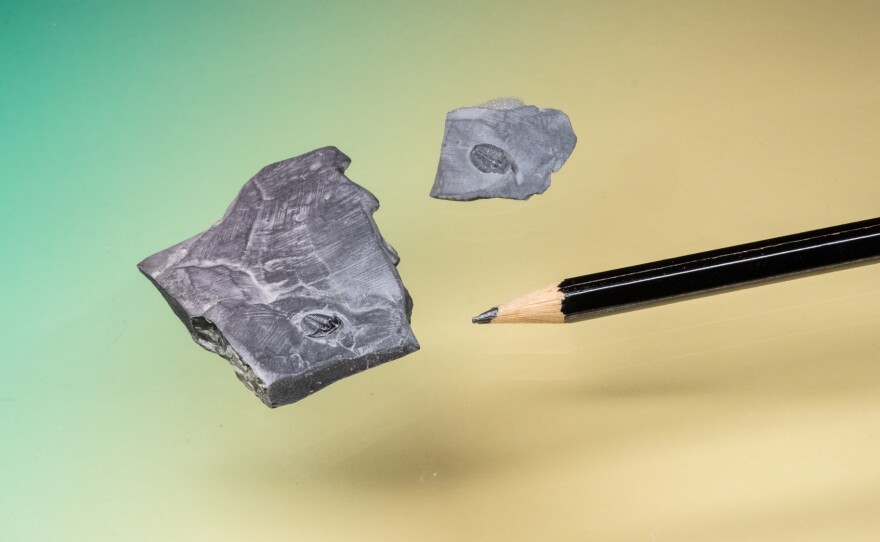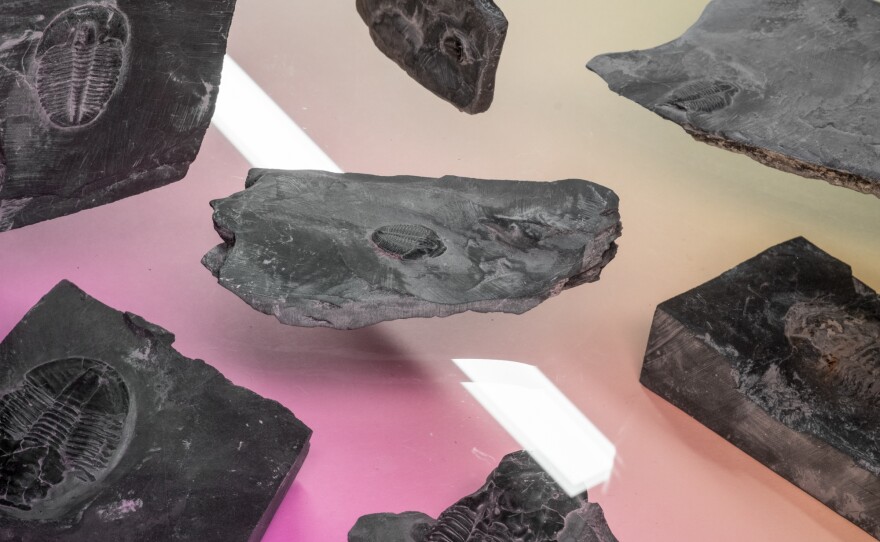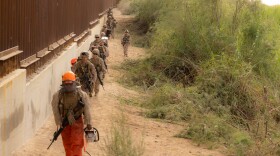Not long into my career in journalism — probably on my sixth deadline of the week — I realized I was in need of some slow, low-stakes adventure. The kind of fun that requires little planning, zero stress, a bit of momentum, and a lot of time. Deep, meditative time. The kind of time you often don't get in a newsroom.
And that's when I discovered a secret. Washington, D.C., the city where I live, is full of hidden fossils.

The District was, all jokes aside, a lush swamp back in the Cretaceous period. Dinosaurs, muck-dwelling mollusks and megalodons patrolled the humid wetland in areas where busy congressional staffers now line up for lunch at food trucks. And periodically, often serendipitously, the traces of that ancient world emerge.
In 1898, dinosaur bones were accidentally uncovered during sewer work down the street from the Capitol building. When paleontologists couldn't identify the dinosaur, they took to calling it Capitalsaurus — a name that stuck and eventually became the official dinosaur of D.C. Just a short drive north, a sandstone slab was discovered in a NASA parking lot containing a slew of 100 million-year-old dinosaur and mammal prints, along with a fossilized pile of poop — a remarkable find considering the amateur fossil hunter who found it just happened to be dropping his wife off at work when it caught his eye in 2012. There are even secret fossils nestled within the limestone floors and columns of D.C.'s federal buildings.
Fossils, it seems, are a humble, hidden constant in the city's bustling ecosystem. And in my overstimulated life, seeking out a few constants in the world sounded pretty good.
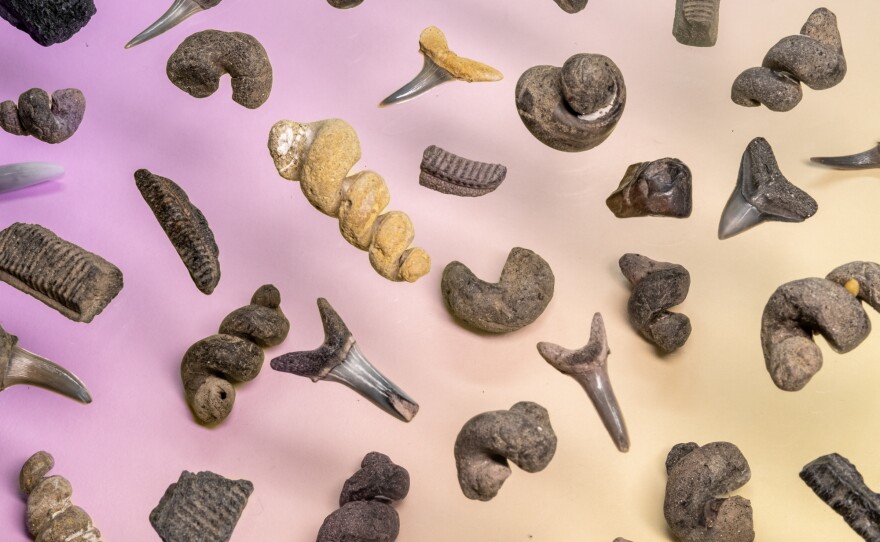
Learning to see the swamp
It helps that fossil hunting physically removes me from the city. Many of the local sites are within 80 miles south of the capital along the Potomac River and a short mile-long hike to the shoreline. The alertness I carry with me in a regular week — biking through traffic, tending to the immediacy of news-related email pings or Slack notifications — redirects with each step forward. By the time I reach the river's edge, I've found the space to breathe again. I can sit on a fallen tree and watch the water. But there's hidden ghosts waiting to be seen.
Along the shore, fossils that are 50 million years old regularly peek out of the layered landscape. It's just a matter of knowing what to look for — the shiny gray tip of a prehistoric shark tooth or the dark patterned ridges of a ray tooth plate. Spiral porous rocks are perhaps the most conspicuous — they're what remains of prehistoric snail shells.
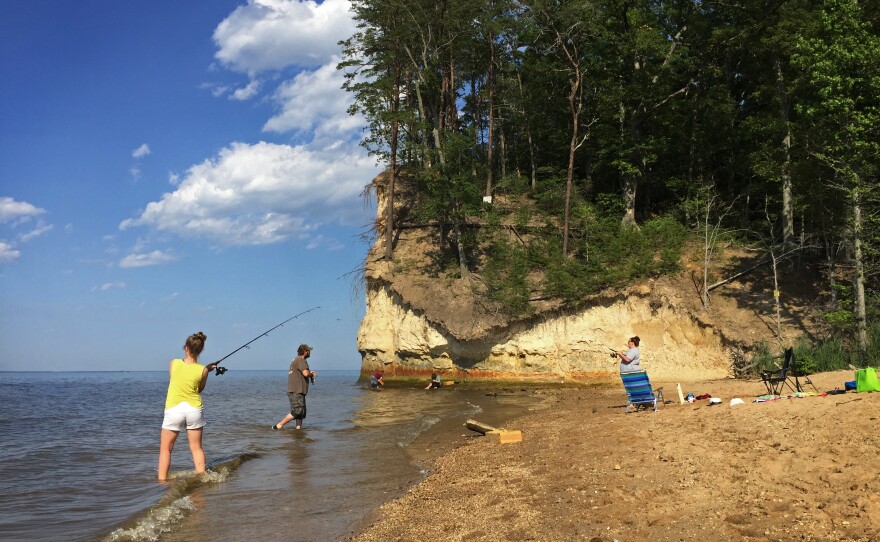
It's a visual game, requiring patience and focus. Spotting recognizable shapes and textures in the wild is akin to meditating over a broken puzzle scattered in the sediment. I'm looking for the rare end pieces.
Sometimes I don't spot anything. Other days, maybe following a recent storm, I can't stop seeing them — tooth, shell, tooth, bone? — and I fall into a steady, flow state.
My crummy cell service in this nook of the river holds back the rest of the world while I'm finding another one. The fossils aren't demanding my immediate attention. They have nothing but time.
Pursuing the inland sea
When I had collected countless prehistoric shells and shark's teeth around D.C., my curiosity led me in search of deeper time and westward places. I had read that 500-million-year-old fossils were somewhat easy to find in parts of western Utah.
About 180 miles south of Salt Lake City, my partner and I arrived at a remote quarry rich with Cambrian-era trilobites, early marine invertebrates that scuttled across the inland seabed and went extinct 252 million years ago. Visitors can pay to carefully split shale — soft, chalky rock — with a hammer and chisel in search of pockets of this fossilized life. Our guide showed us the ropes and then off we went into the dig site.
It didn't take long. At first we found tiny, dime-sized trilobites. They were impressive with intricate tell-tale cheeks — just small. Then, larger trilobites emerged, but pieces of them — shattered midsections or fragmented heads.
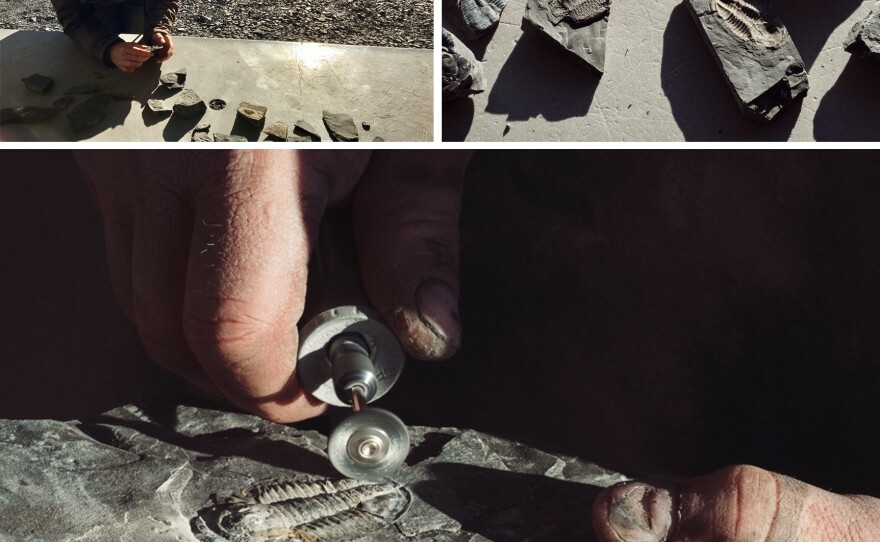
Trilobites molted during their lives. They shed their rough outer shell, revealing delicate new bodies that took time to harden again. In a perilous sea, the molting process left them vulnerable to predators but allowed them to grow. It was a risky evolutionary turn. Many trilobite fossils are actually the discarded remnants of the molting stage. And no doubt that's a lot of what we were finding too.
But one day millions of years ago, a bottle cap-sized trilobite came to rest on the murky seafloor. And there it sat until I came knocking its shale tomb open, revealing the evidence of its life imprinted in brittle rock.
Bringing the time travel home
At some point during a trip, there comes a time when you realize you've got to return home and slot back into the routines you'd left. The trilobites went up on the shelf at home. I took the bottle cap trilobite fossil into the newsroom and placed it along the ledge of my cubicle. It's a distraction I want to notice throughout the day. What stresses nudged at its attention? What did it look like bustling across the silty sea floor?
Although my life in D.C. still requires my direct and immediate focus, turning over that piece of rock is a way to transport me outside of a moment and to a much longer narrative — a time before humans arrived and built cities on top of swamps and set deadlines for deliverables.
Thinking about geological time makes me feel brief and remarkable, like the little trilobite. I realize a lot of stressful minutiae doesn't matter. And a few important things really do.
My worried mind settles down. My perspective shifts. Maybe I don't need to take that phone call right this minute.
Sometimes it's helpful to consider the life of a little arthropod, puttering along a seabed a long time ago.
Copyright 2022 NPR. To see more, visit https://www.npr.org. 9(MDAzMjM2NDYzMDEyMzc1Njk5NjAxNzY3OQ001))
